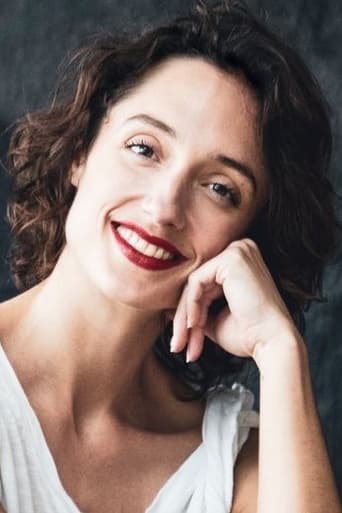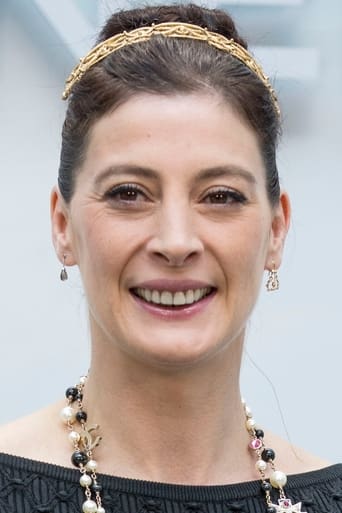Cubussoli
Very very predictable, including the post credit scene !!!
Hottoceame
The Age of Commercialism
Spidersecu
Don't Believe the Hype
Freeman
This film is so real. It treats its characters with so much care and sensitivity.
Renereedge
If you are a very devoted fan of ballet you might appreciate seeing how professional dancers work when practicing.Other than that, this movie is horrible. It is about two hours too long, the cuts are weird, lightning gloomy where no gloom is needed, no discussion, explanation, elaboration, investigation or anything else otherwise associated with documentaries.If you love seeing shaky hand-held vistas of Paris rooftops you might like the footage, although I'm sure the tourist office of Paris has much better films for free.I sat through the entire movie hoping for something to happen, some twist, conclusion, anything. Nothing. I left the theatre with an empty feeling, wishing I could have those long hours of my life back.Oh, and dancing and cinema are two of my largest passions in life.
peterinstockholm
The documentary director Frederick Wiseman, has been much acclaimed for his bare and non-narrative style. He just places a camera somewhere and register what happens. No information about the action or the people involved is given. But Wiseman did choose the locations. He did choose what to register. And for how long each set and set of actions are supposed to roll. (And that is long, very long). The result is a deceptively documentary narrative about the Paris Opera. But the story told is of course Wiseman's interpretation of the Paris Opera.We all know that documentaries are the result of a personal vision, there is no such thing as objectivity. But we have to remind ourselves of this watching La Danse, as it is seemingly devoid of valuation.Here are some examples of what Wiseman chooses to show and emphasize (randomly presented à la Wiseman): Dancers do not talk with each other. Dancers are silent, anonymous people. The artistic director never looses her temper. Almost no one in this movie loses his or her temper. The only black people at the Paris Opera are cleaners or cashiers. The food in the Opera's canteen is pale and colorless, like hospital food. The bread in the canteen is guillotined. The modern ballets of the Paris Opera are full of violence, anger and frustration. The longest ballet scene in the movie is a literal blood bath from Medea. Even the scenes from the Nut Cracker look drab and dull. The whole film is dark and gloomy, probably because of the lighting. The dimly lit corridors of the Opera house are narrow and empty of people. The film starts and ends in the claustrophobic catacombs under the Opera House. OK, just a few examples but they say something of Wisemans perspective.This film has nevertheless its fascinating moments, especially the meetings in the artistic directors office. But never have dance and ballet had this joy-less outlook in a movie before. And never before have the images of the roof tops of Paris (frequently interspersed throughout the movie) appeared so refreshing after the sombre rehearsal studios of the Paris Opera.
zken
The director of this film, Frederick Wiseman, has the unusual idea that he can set up a camera and a film will happen. The crazy thing is, it seems to work. With no narrative, no drama, and a whole lot of detail, Wiseman takes you through all the nooks and crannies of the Paris Opera ballet, and it is a fun if somewhat long visit. One scene is typical: the artistic director of the ballet is meeting with a very young dancer. She is terribly young, beautiful and speaks French with a very odd accent. Nothing much is said in this meeting, it seems almost completely superfluous; but that is exactly what gives it such charm and interest. You feel like a voyeur to something special and unique. I got the same feelings from watching the Michael Jackson movie, This is It. Now Mr. Jackson's art and the Paris ballet are on two different planets, but the fact that two very moving films about rehearsal have just come out, tell us something about the critical essence of all art. The great artists get to where they are by spending a lifetime practicing. And watching them practice, whether it is in the ballet or on the pop stage, is to see the way it all comes together. Now it would have been great to fly to London or Paris and see these performances in person. But the magic of film is that is brings you there. And in a way, these movies show you something almost all the fat cats miss-real art just does not happen, it is lived.
danddinmont
I learned about the screening of this film in a newspaper insert that appeared a week after free tickets became available for AFI FEST, courtesy of Audi. Applicants were permitted ten pairs of tickets! so not surprisingly no more were available...however there would be a "rush" prior to each screening in the series. When the lights in the the theater went down, this morning at 10:00 AM, it was less than two thirds full. The audience was probably made up equally of ballet and Wiseman film fans, and I think both may have come away with some dissatisfaction. It is one of Wiseman's stocks in trade not to offer explanations, and although there are some fairly obvious clues about scenes from the "Nutcracker", if there were any about the less well known ballets, they went right by me. Unlike his earlier ballet film we learn very little about any individual dancers. Much of the dialog is in French, with English subtitles with the speakers not always identified by name, adding to my confusion. The scenes with the company's artistic director are brilliant, especially the planning session for the visit by a group of major American donors. Transition shots whether of the Parisian cityscape or the curve of a staircase are always gems; and the inclusion of the opera house's beekeeper, again without comment, is an absolute delight. Over all, my quibbles are minor, I think this is a film that fans, both of the ballet and of Frederick Wiseman films will find worth viewing.


